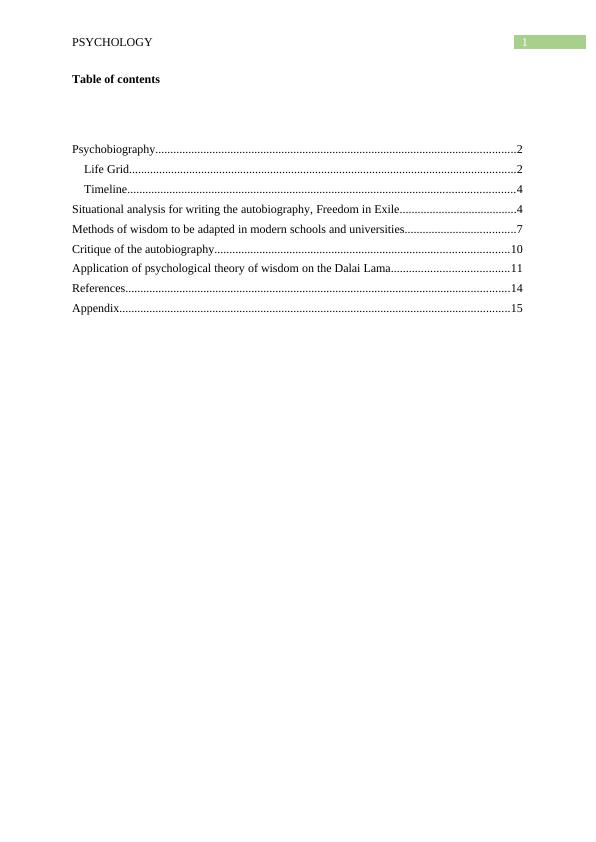Dalai Lama’s Autobiography: Freedom in Exile
Write a psychobiography of a spiritual autobiography written by an exemplary person considered wise within a wisdom tradition, contextualizing and interpreting the autobiography.
18 Pages5218 Words46 Views
Added on 2023-01-12
About This Document
This document provides a detailed analysis of Dalai Lama’s autobiography, Freedom in Exile. It explores his life, achievements, and the challenges he faced. The document also discusses the methods of wisdom that can be adapted in modern schools and universities. It provides valuable insights and critiques of the autobiography.
Dalai Lama’s Autobiography: Freedom in Exile
Write a psychobiography of a spiritual autobiography written by an exemplary person considered wise within a wisdom tradition, contextualizing and interpreting the autobiography.
Added on 2023-01-12
ShareRelated Documents
End of preview
Want to access all the pages? Upload your documents or become a member.
International Relations : Assignment
|10
|3123
|87
The Reincarnation System of Dalai Lama
|11
|462
|25
Leadership Case Study: Characteristics and Conflicts of Dalai Lama's Leadership Roles
|8
|1882
|309




